So the soldiers, out of the wrath and hatred they bore the Jews, nailed those they caught, one after one way, and another after another, to the crosses, by way of jest, when their multitude was so great, that room was wanting for the crosses, and crosses wanting for the bodies. (Jewish War 5:446-451)
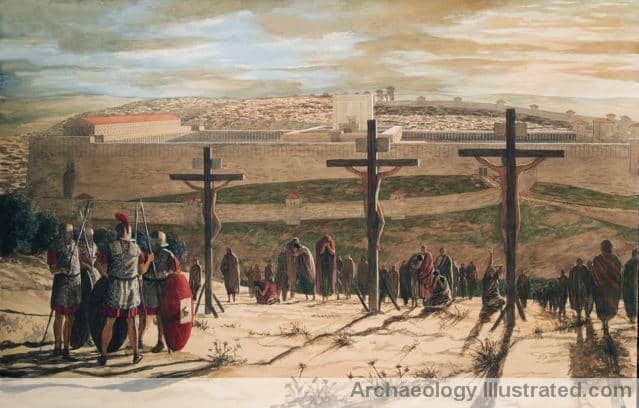
Joseph bar Matthias, better known to English readers as Josephus (b. 37 C.E.), the 1st century Jewish historian, is our best literary source for the practice of crucifixion in the land of Israel during the 1st century CE. At one point he describes the practice as “that most wretched of deaths” (War 7. 203). As a general in command of the Jewish forces of Galilee in the Great Revolt against Rome (66-73 C.E.), he subsequently surrendered to the Romans and befriended himself to the Roman general Vespasian and his son Titus, both of whom who became emperors of Rome in a successive father-son dynasty. Josephus ended up living in Rome, a patron of the royal family, where he wrote his Life, his account of the Jewish War, an apologetic work defending Judaism against the attack of a Greek author, Against Apion, and his massive multi-volume work, The Antiquities of the Jews.
However, Josephus is not our only source for the practice of crucifixion in the ancient world. John Granger Cook has now published his massive 500 page work, Crucifixion in the Mediterranean World (Tübingen: Mohr Siebeck, 2014) that puts before us for the first time all significant literary references to the practice of crucifixion with critical analysis. Cook provides the original texts in Latin, Greek, Hebrew, or Aramaic with translation and commentary. One overall conclusion of Cook’s monumental contribution is that there is no single method of crucifixion–broadly defined as “execution by suspension.” The type of cross, the terminology used, and the various ways in which human bodies were attached were variable.
Fortunately, with regard to crucifixion in the land of Israel in the 1st century CE we do now have some significant archaeological evidence. In 1968, in the suburb of Givat Havmitar, just north of the city of Jerusalem, builders discovered a tomb with the skeletal remains of a Jewish male–Yehochanan–who had been crucified. Full discussion of this find and its implications are on-line at the Biblical Archaeology Society site here and the PBS Frontline “Jesus to Christ” series here.
But there is additional new evidence that has recently come to light. Few have heard anything about the “Abba Cave,” discovered in 1971 in the north Jerusalem suburb of Givat Hamivtar–not far from the tomb of “Yehohanan,” The Abba cave held the remains of another “crucified man,” with three nails–not just a single one in the heel bone–that clearly pinned the hands (not the wrists, as some have argued) in hook-like fashion to a cross beam. It was assumed back in the 1970s that these bones were buried and no longer available for analysis–but it turns out this is not the case. Tel Aviv University anthropologist Israel Hershkovitz discovered the remains, untouched in his lab for years, and has recently presented his own conclusions. What is even more intriguing, the victim was arguably none other than Matitiyahu Antigonus–the last of the Hashmonean kings–who was both beheaded and crucified by Marc Antony in 37 BC. You can read more of this important discovery here.
Despite some initial nay-saying, by those who are apparently not aware of all the facts, including the available skeletal remains and nails mentioned here, the case that the tomb held the remains of a crucified/beheaded male, as Nicu Haas first indicated, is a convincing one, given this latest analysis from Prof. Hershkovitz. Also those who have argued that crucifixion nails went through the wrist not the hands, and that these nails are too “short” to be for crucifixion, are just mistaken. Hershkovitz has definitely clarified this issue. The nails are driven through the backside of the hand and through the palm, then either angled or bent into a hook, not to hold up the body but to keep the hands and arms in place–thus “tacking” or pinning the hands to the wood behind. The arms themselves were likely then tied to hold the arms in place and bear some of the body weight–thus lengthening the time on the cross to several days. The victims died from dehydration, trauma, fatigue, and shock, not from loss of blood. Given the latest analysis it turns out that the hypothesis that this individual was the Hasmonean royal priest/king Antigonus is a likely possibility. See my previous post: “The Abba Cave, Crucifixion Nails, and the Last Hasmonean King.”
Professor Hershkovitz has also recently proposed that the type of cross most likely used in Jesus’ crucifixion–and thus the Roman practice in the Land of Israel from 63 BCE to 135 CE, was on an X shaped cross. He is convinced that this shape best fits the forensic evidence from both the Yehochanan and Abba tombs. In the recent documentary “Secrets of the Crucifixion,” produced by Associated Producers for Discovery Science Prof. Hershkovitz argues his case, using human models who are fixed to various shaped crosses to determine which is the most likely given our archaeological evidence.
This type of cross might account for one of our earliest Christian symbols–the Chi Rho, long before the standard T-shaped Latin cross began to prevail after Constantine’s time.
Despite this archaeological and iconographic evidence Josephus remains our primary literary witness to Roman crucifixion in the Land of Israel in the time of Jesus. I thought it might be helpful to pull together all the references in Josephus’s works in one place so I present the results here. I have used the rather outdated translation of Whiston to facilitate keying in these passages, and because it is a translation in the public domain. For this reason I have included the old referencing system found in Whiston as well as the Loeb system that is now the standard:
Josephus attempt to save three of his acquaintances from crucifixion:
And when I was sent by Titus Caesar with Cerealins, and a thousand horsemen, to a certain village called Thecoa, in order to know whether it were a place fit for a camp, as I came back, I saw many captives crucified, and remembered three of them as my former acquaintance. I was very sorry at this in my mind, and went with tears in my eyes to Titus, and told him of them; so he immediately commanded them to be taken down, and to have the greatest care taken of them, in order to their recovery; yet two of them died under the physician’s hands, while the third recovered. Life 77 [420-421]
The invasion of Palestine by Antiochus Epiphanies c. 167 B.C.E. giving rise to the Maccabean revolt (Hanukkah). Josephus graphic and bloody account mentions crucifixion — not clear just what it implies in this context but certainly some kind of hanging.
3. King Antiochus returning out of Egypt for fear of the Romans, made an expedition against the city Jerusalem; and when he was there, in the hundred and forty-third year of the kingdom of the Seleucides, he took the city without fighting, those of his own party opening the gates to him. And when he had gotten possession of Jerusalem, he slew many of the opposite party; and when he had plundered it of a great deal of money, he returned to Antioch.
4. Now it came to pass, after two years, in the hundred forty and fifth year, on the twenty-fifth day of that month which is by us called Chislev, and by the Macedonians Apelleus, in the hundred and fifty-third olympiad, that the king came up to Jerusalem, and, pretending peace, he got possession of the city by treachery; at which time he spared not so much as those that admitted him into it, on account of the riches that lay in the temple; but, led by his covetous inclination, (for he saw there was in it a great deal of gold, and many ornaments that had been dedicated to it of very great value,) and in order to plunder its wealth, he ventured to break the league he had made. So he left the temple bare, and took away the golden candlesticks, and the golden altar [of incense], and table [of shew-bread], and the altar [of burnt-offering]; and did not abstain from even the veils, which were made of fine linen and scarlet. He also emptied it of its secret treasures, and left nothing at all remaining; and by this means cast the Jews into great lamentation, for he forbade them to offer those daily sacrifices which they used to offer to God, according to the law. And when he had pillaged the whole city, some of the inhabitants he slew, and some he carried captive, together with their wives and children, so that the multitude of those captives that were taken alive amounted to about ten thousand. He also burnt down the finest buildings; and when he had overthrown the city walls, he built a citadel in the lower part of the city, for the place was high, and overlooked the temple; on which account he fortified it with high walls and towers, and put into it a garrison of Macedonians. However, in that citadel dwelt the impious and wicked part of the [Jewish] multitude, from whom it proved that the citizens suffered many and sore calamities. And when the king had built an idol altar upon God’s altar, he slew swine upon it, and so offered a sacrifice neither according to the law, nor the Jewish religious worship in that country. He also compelled them to forsake the worship which they paid their own God, and to adore those whom he took to be gods; and made them build temples, and raise idol altars in every city and village, and offer swine upon them every day. He also commanded them not to circumcise their sons, and threatened to punish any that should be found to have transgressed his injunction. He also appointed overseers, who should compel them to do what he commanded. And indeed many Jews there were who complied with the king’s commands, either voluntarily, or out of fear of the penalty that was denounced. But the best men, and those of the noblest souls, did not regard him, but did pay a greater respect to the customs of their country than concern as to the punishment which he threatened to the disobedient; on which account they every day underwent great miseries and bitter torments; for they were whipped with rods, and their bodies were torn to pieces, and were crucified, while they were still alive, and breathed. They also strangled those women and their sons whom they had circumcised, as the king had appointed, hanging their sons about their necks as they were upon the crosses. And if there were any sacred book of the law found, it was destroyed, and those with whom they were found miserably perished also. Antiquities 12. 5. 3-4 [12. 246-256]
Alexander Jannaeus, the Maccabean king (103-76 B.C.E.), turns against the Pharisees and has hundreds crucified.
2. Now as Alexander fled to the mountains, six thousand of the Jews hereupon came together [from Demetrius] to him out of pity at the change of his fortune; upon which Demetrius was afraid, and retired out of the country; after which the Jews fought against Alexander, and being beaten, were slain in great numbers in the several battles which they had; and when he had shut up the most powerful of them in the city Bethome, he besieged them therein; and when he had taken the city, and gotten the men into his power, he brought them to Jerusalem, and did one of the most barbarous actions in the world to them; for as he was feasting with his concubines, in the sight of all the city, he ordered about eight hundred of them to be crucified; and while they were living, he ordered the throats of their children and wives to be cut before their eyes. This was indeed by way of revenge for the injuries they had done him; which punishment yet was of an inhuman nature, though we suppose that he had been never so much distressed, as indeed he had been, by his wars with them, for he had by their means come to the last degree of hazard, both of his life and of his kingdom, while they were not satisfied by themselves only to fight against him, but introduced foreigners also for the same purpose; nay, at length they reduced him to that degree of necessity, that he was forced to deliver back to the king of Arabia the land of Moab and Gilead, which he had subdued, and the places that were in them, that they might not join with them in the war against him, as they had done ten thousand other things that tended to affront and reproach him. However, this barbarity seems to have been without any necessity, on which account he bare the name of a Thracian among the Jews (40) whereupon the soldiers that had fought against him, being about eight thousand in number, ran away by night, and continued fugitives all the time that Alexander lived; who being now freed from any further disturbance from them, reigned the rest of his time in the utmost tranquility. Antiquities 13. 14. 2 [379-383]
The Nahum Pesher found in Cave 4 of the Dead Sea Scrolls appears to refer to him and his cruelty in a cryptic manner:
4Q169 (Nahum) “He fills his cave with prey and his den with game. This refers to the Lion of Wrath…vengeance upon the Flattery Seekers, because he used to hang men alive, as it was done in Israel in former times…”
Following the death of Herod in 4 B.C.E. there were outbreaks of revolt throughout Judea. Varus, the Roman legate of Syria took two legions and brutally pacified the country, particularly in Galilee.
10. Upon this, Varus sent a part of his army into the country, to seek out those that had been the authors of the revolt; and when they were discovered, he punished some of them that were most guilty, and some he dismissed: now the number of those that were crucified on this account were two thousand. After which he disbanded his army, which he found no way useful to him in the affairs he came about; for they behaved themselves very disorderly, and disobeyed his orders, and what Varus desired them to do, and this out of regard to that gain which they made by the mischief they did. As for himself, when he was informed that ten thousand Jews had gotten together, he made haste to catch them; but they did not proceed so far as to fight him, but, by the advice of Achiabus, they came together, and delivered themselves up to him: hereupon Varus forgave the crime of revolting to the multitude, but sent their several commanders to Caesar, many of whom Caesar dismissed; but for the several relations of Herod who had been among these men in this war, they were the only persons whom he punished, who, without the least regard to justice, fought against their own kindred. Antiquities 17. 10. 10 [17. 295-298]
Josephus mentions the crucifixion of Jesus in passing. The passage is judged authentic by most scholars once the obvious Christian additions (marked here in brackets and italics) are removed. See “Josephus on Jesus” for more details.
Now there was about this time Jesus, a wise man, [if it be lawful to call him a man;] for he was a doer of wonderful works. [a teacher of such men as receive the truth with pleasure,] He drew many after him [of the Jews and of the Gentiles. He was the Christ.] And when Pilate, at the suggestion of the principal men amongst us, had condemned him to the cross, (9) those that loved him at the first did not forsake him; [for he appeared to them alive again the third day; (10) as the divine prophets had foretold these and ten thousand other wonderful things concerning him.] And the tribe of Christians, so named from him, are not extinct at this day. Antiquities 18. 3. 3 [63-64]
In the very next paragraph Josephus recounts the crucifixion in Rome of the priests of Isis, ordered by the Emperor Tiberius himself, for their misdeeds in arranging the sexual seduction of a virtuous woman.
4. About the same time also another sad calamity put the Jews into disorder, and certain shameful practices happened about the temple of Isis that was at Rome . . . When he had said this, he went his way. But now she began to come to the sense of the grossness of what she had done, and rent her garments, and told her husband of the horrid nature of this wicked contrivance, and prayed him not to neglect to assist her in this case. So he discovered the fact to the emperor; whereupon Tiberius inquired into the matter thoroughly by examining the priests about it, and ordered them to be crucified, as well as Ide, who was the occasion of their perdition, and who had contrived the whole matter, which was so injurious to the woman. He also demolished the temple of Isis, and gave order that her statue should be thrown into the river Tiber; while he only banished Mundus, but did no more to him, because he supposed that what crime he had committed was done out of the passion of love. And these were the circumstances which concerned the temple of Isis, and the injuries occasioned by her priests. I now return to the relation of what happened about this time to the Jews at Rome, as I formerly told you I would. Antiquities 18. 3. 4 [18. 65, 78-80]
The sons of Judas the Galilean, who had led a revolt in 6 C.E. over the Roman taxation census, were crucified by the Roman procurator Tiberius Alexander (46-48 C.E.), who was the nephew of the philosopher Philo.
2. Then came Tiberius Alexander as successor to Fadus; he was the son of Alexander the alabarch of Alexandria, which Alexander was a principal person among all his contemporaries, both for his family and wealth: he was also more eminent for his piety than this his son Alexander, for he did not continue in the religion of his country. Under these procurators that great famine happened in Judea, in which queen Helena bought corn in Egypt at a great expense, and distributed it to those that were in want, as I have related already. And besides this, the sons of Judas of Galilee were now slain; I mean of that Judas who caused the people to revolt, when Cyrenius came to take an account of the estates of the Jews, as we have showed in a foregoing book. The names of those sons were James and Simon, whom Alexander commanded to be crucified. But now Herod, king of Chalcis, removed Joseph, the son of Camydus, from the high priesthood, and made Ananias, the son of Nebedeu, his successor. And now it was that Cumanus came as successor to Tiberius Alexander; as also that Herod, brother of Agrippa the great king, departed this life, in the eighth year of the reign of Claudius Caesar. He left behind him three sons; Aristobulus, whom he had by his first wife, with Bernicianus, and Hyrcanus, both whom he had by Bernice his brother’s daughter. But Claudius Caesar bestowed his dominions on Agrippa, junior. Antiquities 20. 5. 2 [20. 100-104]
Josephus reports on the Jewish custom of taking down the bodies of those crucified by the Romans during the Great Revolt and burying them, if permitted, before sundown. This was in response to the Torah commandment found in Deuteronomy 21:22-23: “When someone is convicted of a crime punishable by death and is executed, and you hang him on a tree, his corpse must not remain all night upon the tree; you shall bury him that same day, for anyone hung on a tree is under God’s curse.”
2. But the rage of the Idumeans was not satiated by these slaughters; but they now betook themselves to the city, and plundered every house, and slew every one they met; and for the other multitude, they esteemed it needless to go on with killing them, but they sought for the high priests, and the generality went with the greatest zeal against them; and as soon as they caught them they slew them, and then standing upon their dead bodies, in way of jest, upbraided Ananus with his kindness to the people, and Jesus with his speech made to them from the wall. Nay, they proceeded to that degree of impiety, as to cast away their dead bodies without burial, although the Jews used to take so much care of the burial of men, that they took down those that were condemned and crucified, and buried them before the going down of the sun. I should not mistake if I said that the death of Ananus was the beginning of the destruction of the city, and that from this very day may be dated the overthrow of her wall, and the ruin of her affairs, whereon they saw their high priest, and the procurer of their preservation, slain in the midst of their city. Jewish War 4. 5. 2 [4. 314-318]
Josephus reports that the Romans crucified many before the walls of Jerusalem during the siege of 70 C.E. The idea was to terrorize the population and force a surrender. The number reached 500 a day at one point until there was no wood left in the area for this purpose.
5. Now it happened at this fight that a certain Jew was taken alive, who, by Titus’s order, was crucified before the wall, to see whether the rest of them would be affrighted, and abate of their obstinacy. But after the Jews were retired, John, who was commander of the Idumeans, and was talking to a certain soldier of his acquaintance before the wall, was wounded by a dart shot at him by an Arabian, and died immediately, leaving the greatest lamentation to the Jews, and sorrow to the seditious. For he was a man of great eminence, both for his actions and his conduct also. Jewish War 5. 6. 5 [5: 289-290]
1. So now Titus’s banks were advanced a great way, notwithstanding his soldiers had been very much distressed from the wall. He then sent a party of horsemen, and ordered they should lay ambushes for those that went out into the valleys to gather food. Some of these were indeed fighting men, who were not contented with what they got by rapine; but the greater part of them were poor people, who were deterred from deserting by the concern they were under for their own relations; for they could not hope to escape away, together with their wives and children, without the knowledge of the seditious; nor could they think of leaving these relations to be slain by the robbers on their account; nay, the severity of the famine made them bold in thus going out; so nothing remained but that, when they were concealed from the robbers, they should be taken by the enemy; and when they were going to be taken, they were forced to defend themselves for fear of being punished; as after they had fought, they thought it too late to make any supplications for mercy; so they were first whipped, and then tormented with all sorts of tortures, before they died, and were then crucified before the wall of the city. This miserable procedure made Titus greatly to pity them, while they caught every day five hundred Jews; nay, some days they caught more: yet it did not appear to be safe for him to let those that were taken by force go their way, and to set a guard over so many he saw would be to make such as great deal them useless to him. The main reason why he did not forbid that cruelty was this; that he hoped the Jews might perhaps yield at that sight, out of fear lest they might themselves afterwards be liable to the same cruel treatment. So the soldiers, out of the wrath and hatred they bore the Jews, nailed those they caught, one after one way, and another after another, to the crosses, by way of jest, when their multitude was so great, that room was wanting for the crosses, and crosses wanting for the bodies. Jewish War 5. 11. 1 [5:446-451]

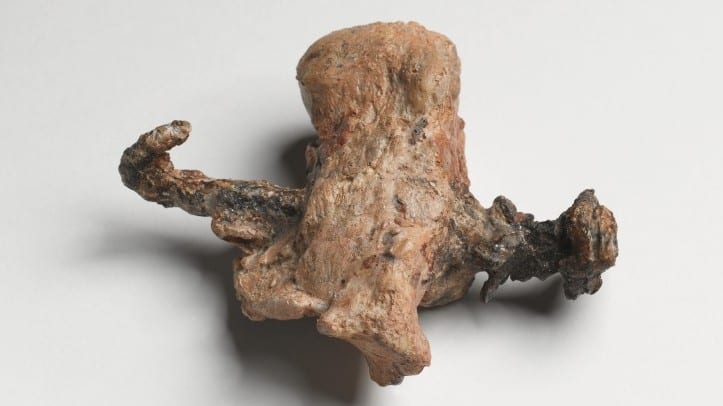

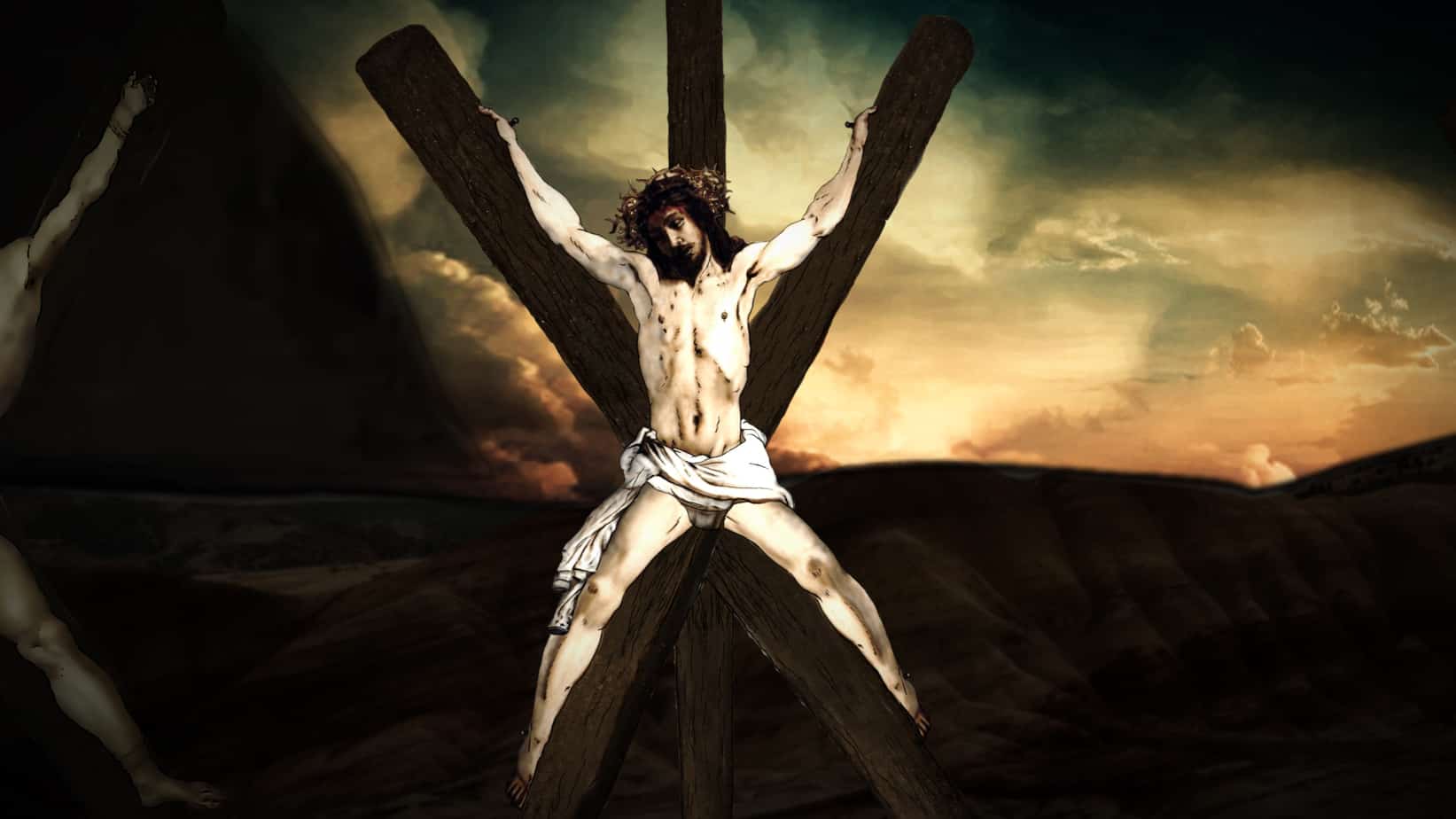
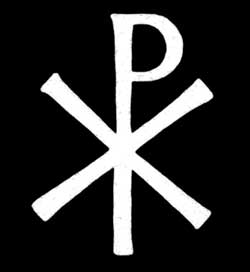
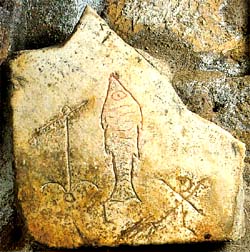








Comments are closed.